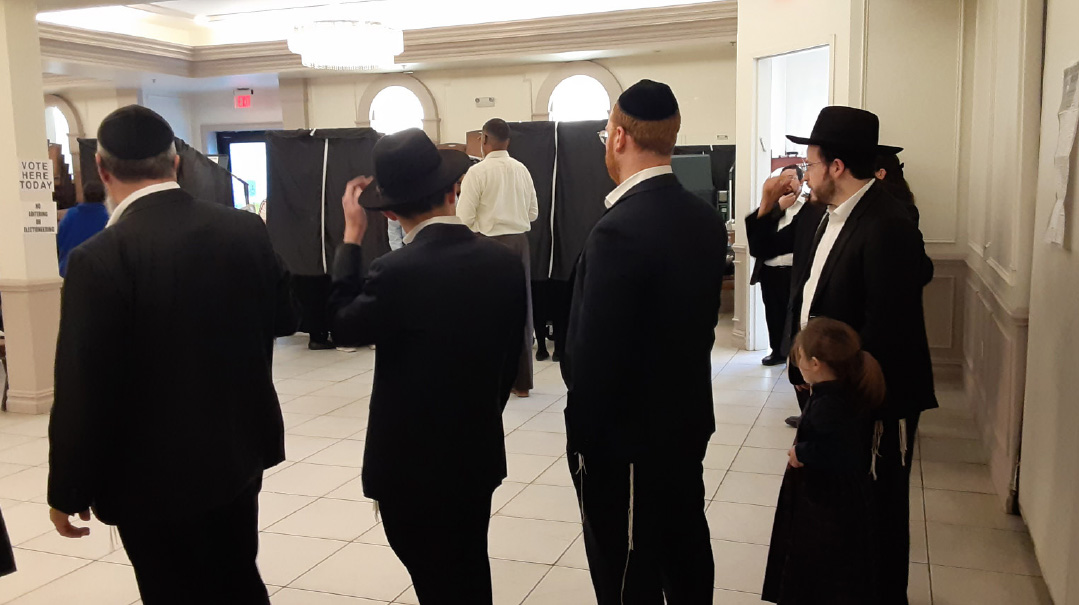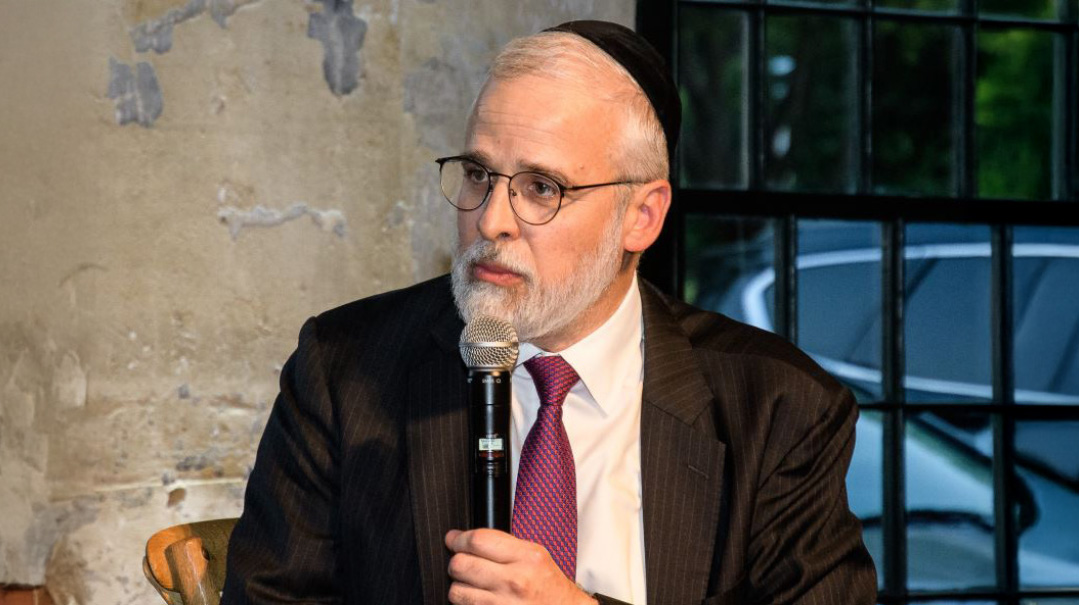Unlock the Door Inside of You
| April 8, 2025Pharaoh is the yetzer hara, conveying the message of Meitzarim to all who might hope for greatness

The great tzaddik of Yerushalayim, Rav Aryeh Levin ztz”l, often visited Yidden incarcerated in prison. Once, while paying such a visit on Shabbos Chol Hamoed Pesach, he asked the inmates to share how their Seder had gone.
“Did you have what you needed?” he inquired. “Were you able to get matzah, maror, wine?”
“Yes,” they replied, “we received packages with all the necessary items for a proper Seder. We had karpas, saltwater, a ke’arah with charoses, chazeres, even a zeroa.”
Rav Aryeh beamed. Even in their challenged state, these Yidden had kept the mitzvos to their fullest.
But one inmate stepped forward.
“Rebbi, we were, baruch Hashem, able to observe every mitzvah and keep every minhag… except for one,” he said. He smiled wryly. “There is a minhag that, before saying Shefoch Chamas’cha, we open the door. Here in jail, the door is locked. We couldn’t fulfill the minhag of opening it.”
Although the inmate’s comment was made somewhat in jest, Rav Aryeh grew serious.
“You may not have opened a physical door,” he said, “but you opened a door locked inside of you. You connected with Hashem on the holy night of Pesach, and took a step out of the spiritual bondage that ensnares all of us, to some degree, throughout the year.”
Rav Aryeh was revealing an essential element of Pesach to these inmates that applies equally to each and every one of us.
Pesach is zeman cheiruseinu — the time of our freedom. We observe this by reliving the story of our servitude in, and redemption from, the physical confines of Mitzrayim. But these confines are not limited to the physical. The seforim hakedoshim teach that the word Mitzrayim can also be read as “Meitzarim,” which means “borders” or “limitations.” What Mitzrayim represents on a spiritual level is a sense of confinement. A sense of limitation. It’s the voice inside of us that says, “I can only go so far. I can’t reach beyond that. I can’t aspire to be greater than what I perceive is within my capabilities.”
In his Igeres HaRambam, the Rambam writes, “Pharaoh melech Mitzrayim hu yetzer hara b’emes — Pharaoh, the king of Mitzrayim, is the true yetzer hara.”
Pharaoh is the yetzer hara, conveying the message of Meitzarim to all who might hope for greatness. “You can’t,” says Pharaoh, “You are stuck in Mitzrayim. You are defined by limitations. There’s no breaking free from here.”
The boundaries of Mitzrayim constrain everything contained within them, but they serve another function as well: to block any outsider from coming in. This, too, is a favorite message of the yetzer hara. Once you’ve left, you cannot return.
This couldn’t be farther from the truth. And this brings us to another central message of Pesach that can be gleaned from the very spelling of the word “matzah.”
While chometz and matzah are polar opposites of each other, their spelling is strikingly similar. They both share a mem and a tzadi. Only one letter differs: chometz has a ches, matzah has a hei.
This seemingly minor distinction underscores the very essence of the stark contrast between chometz and matzah.
The hei in matzah has a very deep significance. The seforim hakedoshim point out that the Gemara teaches (Menachos 29b) that Olam Haba was created with a yud, while Olam Hazeh, This World, was created with a hei. Why is this the case? They explain that the letter hei has an open base, to show that the world is also open below, to allow one who wants to sin to fall freely, with nothing to catch him, beyond the earth’s core.
But the hei has another gap, this one, toward its top, between its free leg and its roof. This opening, the Gemara says, signals to all who have fallen that there remains an avenue of return. You can come back. Just hoist yourself through the opening and you’ll be back where you started.
The ches shares the hei’s open base but lacks the upper opening. The ches sends a message directly opposite of the hei’s. The ches says, “If you fall, you’re finished. You’re blocked out. There’s no coming back.” Chometz, distinguished by its ches, is like Mitzrayim, in that it insists on borders. Those who have left cannot return.
Pesach is the day when we celebrate our ability to live with the hei — the openness that allows constant growth, boundless potential, and a path of return to all who may have failed.
At the start of the Seder, we raise the matzah and say, “Ha lachma anya.” There is a minhag to pronounce it “Hei lachma anya.” Because the “hei” is the very essence of the matzah’s message. We then say “all who are hungry come and eat.” Our doors are open. Come inside. We are the people of hei.
Defying borders comes to us by way of inheritance.
In the Haggadah, we review our history: “Mit’chilah ovdei avodah zarah hayu avoseinu — originally, our ancestors were idolaters.” We then quote a pasuk in Yehoshua that says our ancestors lived “b’ever hanahar” — on one side of the river. Then Hashem took Avraham and placed him in Eretz Canaan — on the other side.
Rav Moshe Wolfson ztz”l shares a very profound insight into the distinction between the two sides of the river. There is a prohibition of “Lifnei iver lo sitein michshol — Do not place a stumbling block before a blind person.” This forbids one from enabling another Jew to sin.
The Gemara specifies that this applies only where the two parties are b’trei ivri d’nahara — “on two different sides of the nahar.” Meaning, one had access to the sin, while the other did not. By granting him that access, you allowed him an opportunity to sin that he wouldn’t otherwise have had. In such a case, lifnei iver applies. Lifnei iver does not apply where the two parties are on the same side of the nahar, because then the aveirah is equally accessible to both.
What we see is that the term “one side of the nahar” connotes accessibility, while the term “two sides of the nahar” connotes inaccessibility.
Initially, Avraham lived on the same side of the nahar as all the idolaters. He was stuck. There was no getting out. The other side of the nahar was unreachable.
But Hashem took Avraham and brought him across the nahar — to the land that had seemed “inaccessible.” By doing so, Hashem showed him that there really is no such thing as inaccessible. In the Torah’s view, the impossible is possible. The hei remains open, we live without meitzarim.
The Tur brings in the name of his brother, Rabbeinu Yehuda, that the three Regalim correspond to the three Avos. Pesach is Avraham, Shavuos is Yitzchak, and Succos is Yaakov.
Pesach is the Yom Tov of Avraham, the one who crossed the daunting nahar. On Pesach, we all reaffirm our status as heirs to his legacy. We too can cross the nahar.
In that same passage, after discussing our idolatrous past, we say “V’achshav keirvanu lifnei HaMakom — and now we were brought close before Hashem.”
Achshav can be understood to mean “now!” Right now, in 5785! We can cross the nahar and shatter all barriers, reaching our true potential.
There is a fascinating Midrash in Eichah Rabbah (1:28) that says the reason Klal Yisrael went into galus was that they ate chometz on Pesach. This obviously needs to be explained, as the simple understanding would dictate that the prohibition against chometz only came into force after the Geulah from Mitzrayim. But however we understand it, the point we see from this Midrash is that chometz equals galus. By eating chometz we subject ourself to galus.
Why is this? Because chometz represents the ches, the very opposite of matzah’s hei. The ches demands unmovable boundaries, the defining feature of bondage. When one eats chometz on Pesach, chas v’shalom, he is rejecting the indomitability passed down to us from our heilige zeide Avraham. He is subjecting himself to limitations.
The message Rav Aryeh Levin shared with those inmates so many years ago remains just as true, and just as relevant, today.
This year, open your doors to your homes at Shefoch Chamas’cha. But more importantly, open the doors to your heart. Realize that there’s no goal beyond your reach and there’s no deadline on your chance to do teshuvah.
On Pesach, our doors are open. All who are hungry, come and eat.
Rav Yoir Adler is the rav of Beis Medrash Shoavei Mayim and maggid shiur in Yeshivas Nachlas Tzvi in Toronto.
(Originally featured in Mishpacha, Issue 1057)
Oops! We could not locate your form.







